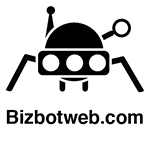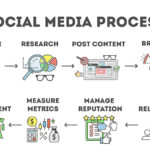What is Customer Segmentation?
Customer segmentation is just a fancy term for grouping your customers based on what they have in common. It’s like organizing your closet. Instead of one big pile of clothes, you have sections: one for shirts, one for pants, and so on. This helps you find what you’re looking for much faster. For your business, this could mean grouping customers by what they buy, how often they shop, or what deals they like.
Why Should You Care About Segmentation?
Here’s why it’s a game-changer for your small business:
- Saves Money: By focusing on groups that are most likely to buy from you, you’re not wasting dollars on those who aren’t interested.
- Better Messages: You can create ads or emails that speak directly to what each group likes, making them more likely to buy.
- Loyal Customers: Customers stick around when they feel you understand what they want.
How Customer Segmentation works
By creating different categories or segments for your target audience based on factors such as demographics, buying behavior, interests, and location, you gain valuable insights into your customers’ unique traits, which enable you to tailor your marketing messages and strategies accordingly.

Tactics you will need:
- Personalized Marketing: Segmentation allows you to speak directly to the needs and preferences of each group. This personalization fosters a stronger connection with potential customers, making them more likely to engage with your brand.
- Resource Optimization: By targeting specific segments, you can focus your marketing efforts where they’re most likely to yield results. This means you can allocate your resources more efficiently and avoid wasting time and money on unproductive leads. Focus on what is working.
- Improved Conversion Rates: When you communicate with leads in a way that resonates with them, you increase the chances of converting them into loyal customers.
Easy Steps to Get Started with Segmentation
- Collect Info: Start with what you know. Who buys from you often? Who only comes around when there’s a sale? You probably already notice these patterns. Write them down.
- Basic Groups: Create simple groups based on what you’ve noticed. You might have ‘Regulars’, ‘Bargain Hunters’, and ‘Holiday Shoppers’ to start.
- Tailor your message: Send targeted messages to each group. A personalized email to your ‘Regulars’ could say, “Thanks for being a loyal customer! Here’s a deal just for you.” It’s more personal and can be done with basic email services.
- Use Social Media Smartly: Post different content that appeals to each group. For ‘Bargain Hunters’, highlight sales or discounts. For ‘Holiday Shoppers’, show off gift ideas during festive seasons.
- Keep It Up: Pay attention to what works. Did a group of customers respond well to a particular promotion? Keep doing more of that.
Next Level Customer Segmentation:
- Gather Customer Data
Start by collecting relevant information about your leads and customers. Use customer relationship management (CRM) software, web analytics, and customer feedback surveys to learn about their interactions with your business. This data will be the foundation for creating effective segments.
- Identify Key Segmentation Criteria
Look for commonalities among your customers and prospects. Key segmentation criteria can include age, gender, location, buying frequency, purchase history, and interests. The more specific you can be, the better you’ll understand your different customer segments.
- Develop Buyer Personas
Once you’ve identified your customer segments, create detailed buyer personas for each group. A buyer persona is a fictional representation of your ideal customer within a specific segment. Understand their motivations, pain points, and the benefits they seek from your products or services.
- Tailor Your Messages
Craft targeted marketing messages for each customer segment. Address their specific pain points and showcase how your offerings provide the solutions they’re seeking. By doing so, you’ll resonate with each group and make a more significant impact.
- Use Multiple Channels
Engage with your leads and customers across various platforms and channels. Some segments might prefer social media, while others might respond better to email marketing or content-focused strategies. Understanding your segments’ preferred communication channels will help you reach them more effectively.
- Monitor and Adjust
Customer segmentation is not a one-time process; it requires continuous monitoring and adjustment. Keep track of your marketing efforts for each segment and analyze the data to assess their effectiveness. Be open to making changes and refining your strategies based on the insights gathered.
Advanced Segmentation Techniques
Beyond basic demographic and psychographic factors, consider these advanced segmentation techniques:
- Lifecycle Stage Segmentation: Group your customers based on their stage in your sales funnel (awareness, interest/consideration, decision, action, retention, etc.). This allows for messaging that guides them to the next stage effectively.
- Value-based Segmentation: Identify your most valuable customers based on their lifetime value (LTV) or potential value to your business. Tailor your efforts to retain these high-value customers and find more like them.
- Micro-segmentation: Break down larger segments into smaller, more niche groups for hyper-targeted marketing campaigns.
Customer Segmentation Improves Lead Conversion
Customer segmentation is a powerful approach that can significantly improve your lead management efforts as a small business owner. By understanding the unique characteristics of each segment and tailoring your marketing messages accordingly, you can establish stronger connections with potential customers, increase lead conversion rates, and optimize your resources for better results.
Remember to gather customer data, identify key segmentation criteria, develop buyer personas, and use multiple channels to engage with your leads effectively. Regularly monitor and adjust your strategies to ensure continued success. With these simple yet effective tips, you’ll be on your way to achieving sustainable growth and success for your small business.

Since its launch in 2016, Bizbotweb has been at the forefront of empowering businesses and individuals to easily navigate the digital world, from owning their intellectual property to managing websites and simplifying WordPress setups. As the author of our articles, the “Chief Robot” brings a wealth of knowledge and innovation, embodying Bizbotweb’s commitment to making digital presence seamless and accessible for everyone. Focusing on integrated digital marketing efforts, our content is designed to guide users through the evolving digital landscape, ensuring they have the tools and insights needed to thrive online.
Blog Categories
Check out other Pages
Have questions?
Schedule a free consultation if you have questions about our digital marketing services or would like additional information.










